By Dr. Mark Bowles
When UAT recently asked me to share an article about one of my passions, I immediately knew I wanted to write about yoga. Over the past five years, my daily yoga practice has provided numerous mental and physical benefits for my 53-year-old mind and body. But I also wanted to write an article that everyone could relate to, and not all of us have a yoga mat and yoga blocks strewn about their office. There is one current event that is uniting the globe in a devastating shared experience right now—the COVID-19 pandemic. Thus the theme of my article, “The Yogi in the Pandemic.”
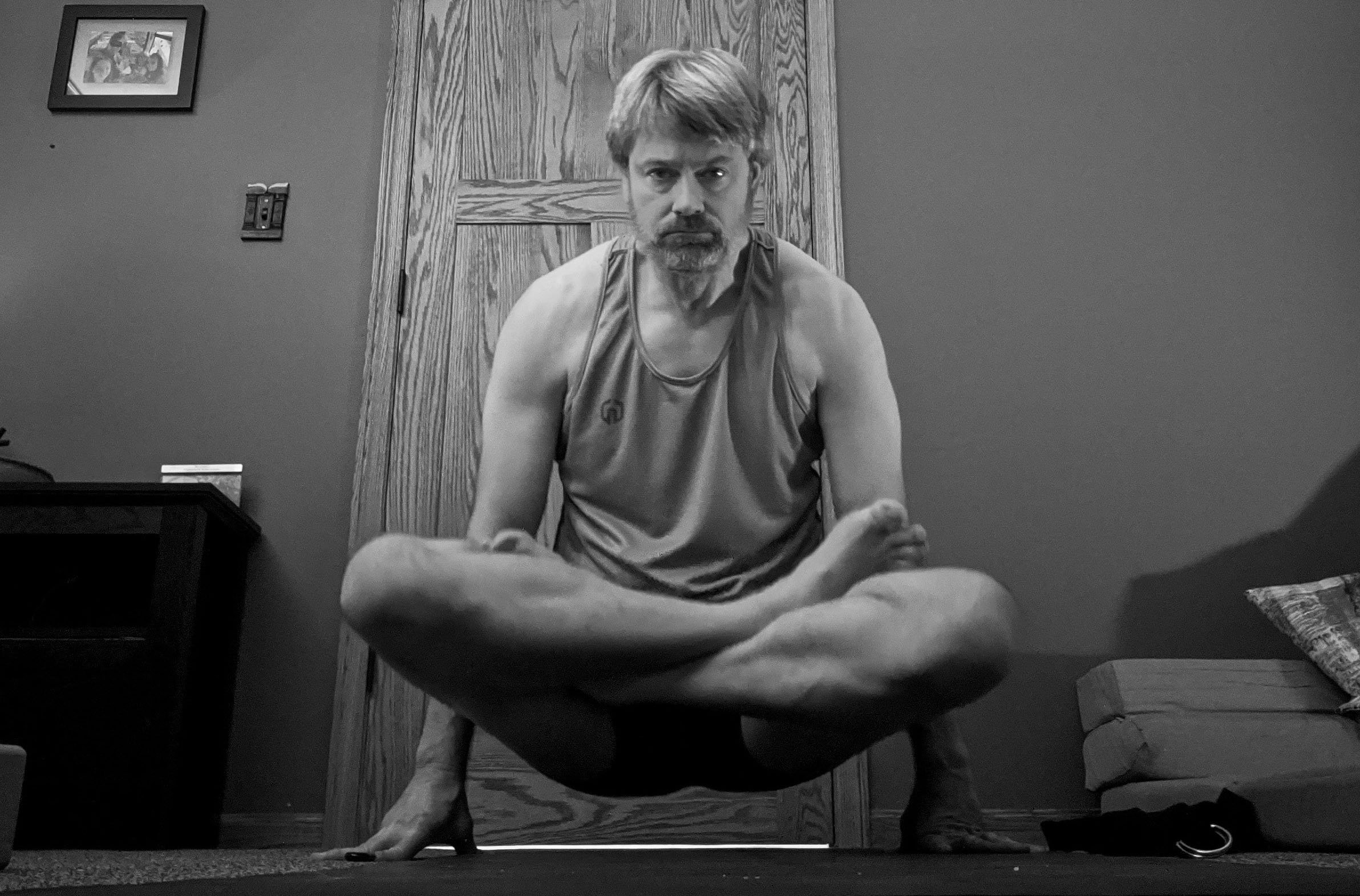
That presented the question: What does someone who practices yoga do in a pandemic? Is that even an important question to ask?
To begin my response, we must journey into the past. We are going to start with a topic that seems entirely unrelated—the National Football League.
A little over a year ago, I was putting the finishing touches on my book entitled The First NFL Season: 1920. I knew that in 2020 the NFL was going to be celebrating 100 years of existence, and remarkably no one had written a book that focused entirely on that first season. Of course, colleges had been playing football games for 50 years. There were also professional teams too, but these were a haphazard collection of local teams without an organization to create a league playing by the same rules.
In the summer of 1920, a few football visionaries met at a local car dealership in Canton, Ohio. Sitting on car running boards and drinking beers, they laid the groundwork for the NFL that we know today. If you watched any NFL games last season, you would have seen the 100NFL logo marking the centennial everywhere, from player uniforms to the fields. You can read more about my book at www.100NFL.com.
In writing the book, I also researched the years leading up to the first season in 1920. The two preceding years were one of the most deadly, chaotic, and frightening periods in all American history. World War I was ending and many families were coping with the loss of 114,000 American men and women in the trenches and battles throughout Europe.
Beyond the global atrocities of a world war, it was a remarkably challenging era. In the United States, there were terrorist attacks, police strikes, race riots, the coming of prohibition, women fighting for the right to vote, and even a baseball World Series cheating scandal. But, one thing overshadowed all of these events in terms of death—the Spanish Flu pandemic of 1918.
It seemed no one’s life was safe, and as pandemic swept through the nation, it killed over 600,000 Americans and an estimated 50 million people worldwide. In other words, the flu killed nearly six times as many Americans as World War I.
In an attempt to stop the spread of the virus, much of the nation shut down, including athletic contests. Immediately after the start of the 1918 season, an Akron, Ohio newspaper reported that the “epidemic [was] taking the spotlight immediately after the opener. Scores of other local teams are also awaiting the word which will allow them to resume activities on the grid” (Akron Evening Times, November 12, 1918, p. 8). Most of the teams were from Ohio, and the state board of health took quick action and banned all athletic contests and any activities attracting a crowd.
As I read this in 2019, it seemed unbelievable to have a health concern so devastating that state officials had to step in and cancel all sporting events. I tried to imagine what it was like to walk around seeing people in creepy facemasks seemingly afraid to get haircuts or go grocery shopping. One reporter from the Los Angeles Times lamented the “depression of closed theaters and other places of amusement, closed churches and assembly halls, facemasks… [and] people who have been staying closely at home for weeks” (Los Angeles Times, December 3, 1918, p. 19).
College campuses closed too. In Detroit, one reporter described life on campus during the pandemic: “the once frivolous co-ed walked through the campus with ‘eyes front’ and her exquisite profile quite covered with an unsightly face-mask. Many a nose… went unpowdered, many a cheek unrouged” (Detroit Free Press, November 10, 1918, p. 33).
“Wear a Mask and Save your Life,” was the heading of a full-page advertisement in the San Francisco newspapers (Long Beach Press, October 24, 1918, p. 12).
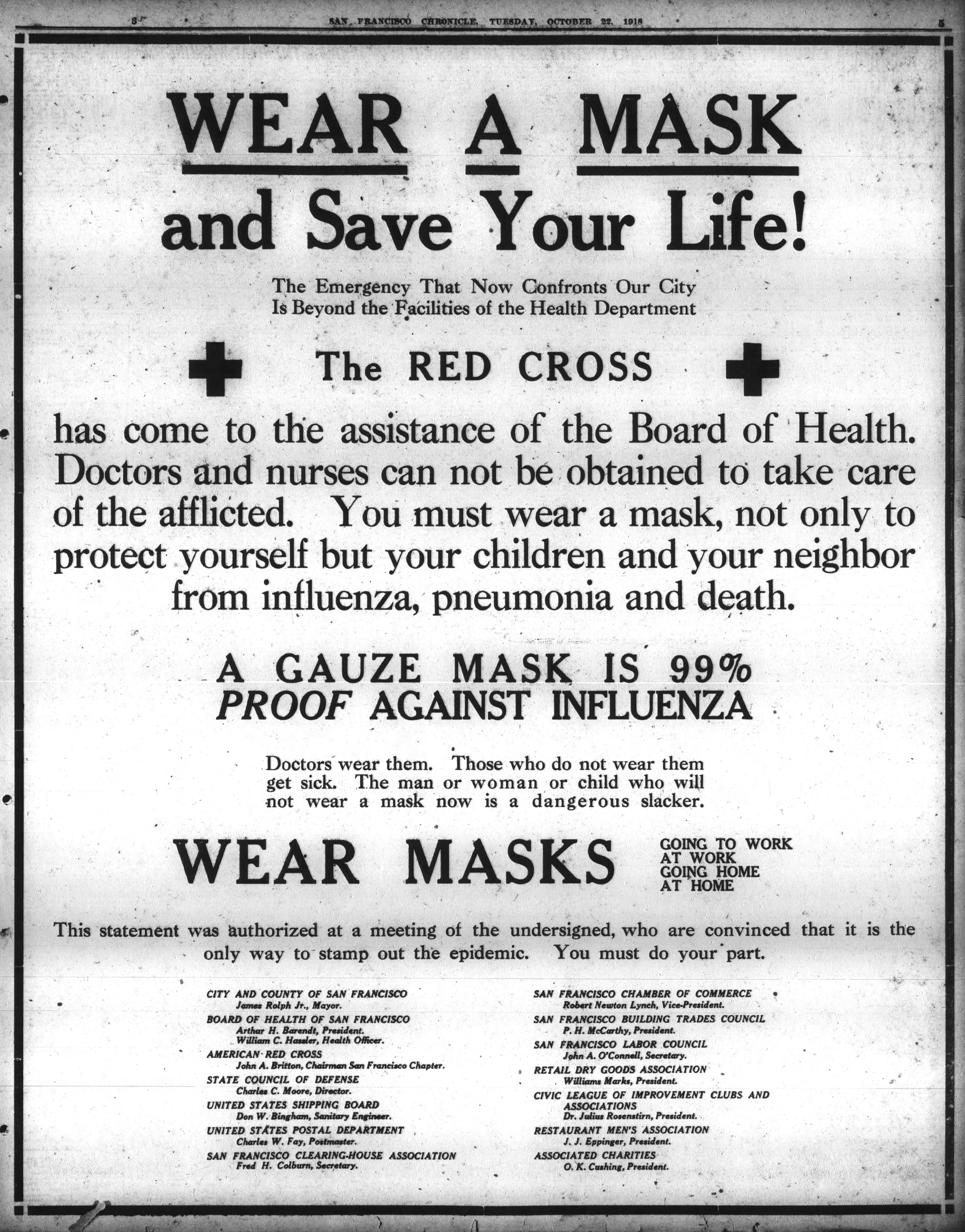
News clip provided by Dr. Bowles
It all seemed so unreal to consider stopping modern life in its tracks with canceled athletic seasons, closed movie theaters, suspended college classes, and facemasks everywhere. It sounded like the dystopian visions portrayed in zombie apocalypses on TV and the movies.
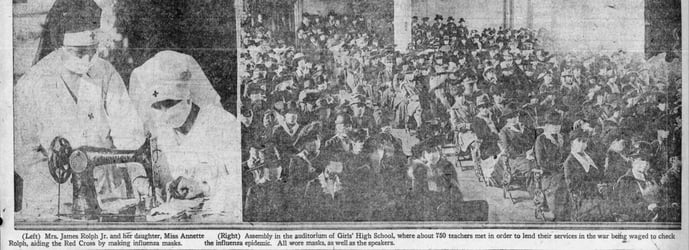
News clip provided by Dr. Bowles
The one thing I could imagine was a strong national response. In 1918 the War Department asked the chapters of the American Red Cross to “undertake immediately a nation-wide survey of the nursing resources.” One key area that needed attention was “face-masks—which have been made for use very quickly” (Bethel Vermont Courier, October 24, 1918, p. 6).
.jpg?width=5012&name=San_Francisco_Chronicle_Thu__Oct_24__1918_%20(1).jpg)
News clip provided by Dr. Bowles
And so fast-forwarding to 2020, what seemed like experiences so incomprehensible to me a few months earlier, became my life (and yours too) living with our pandemic. History, as it often does, was repeating itself.
As a historian, I like to think that there are lessons that we can learn from the past. While we live in very different political, social, scientific, technological, and medical worlds now than those who lived through the Spanish Flu in 1918, there are still important lessons.
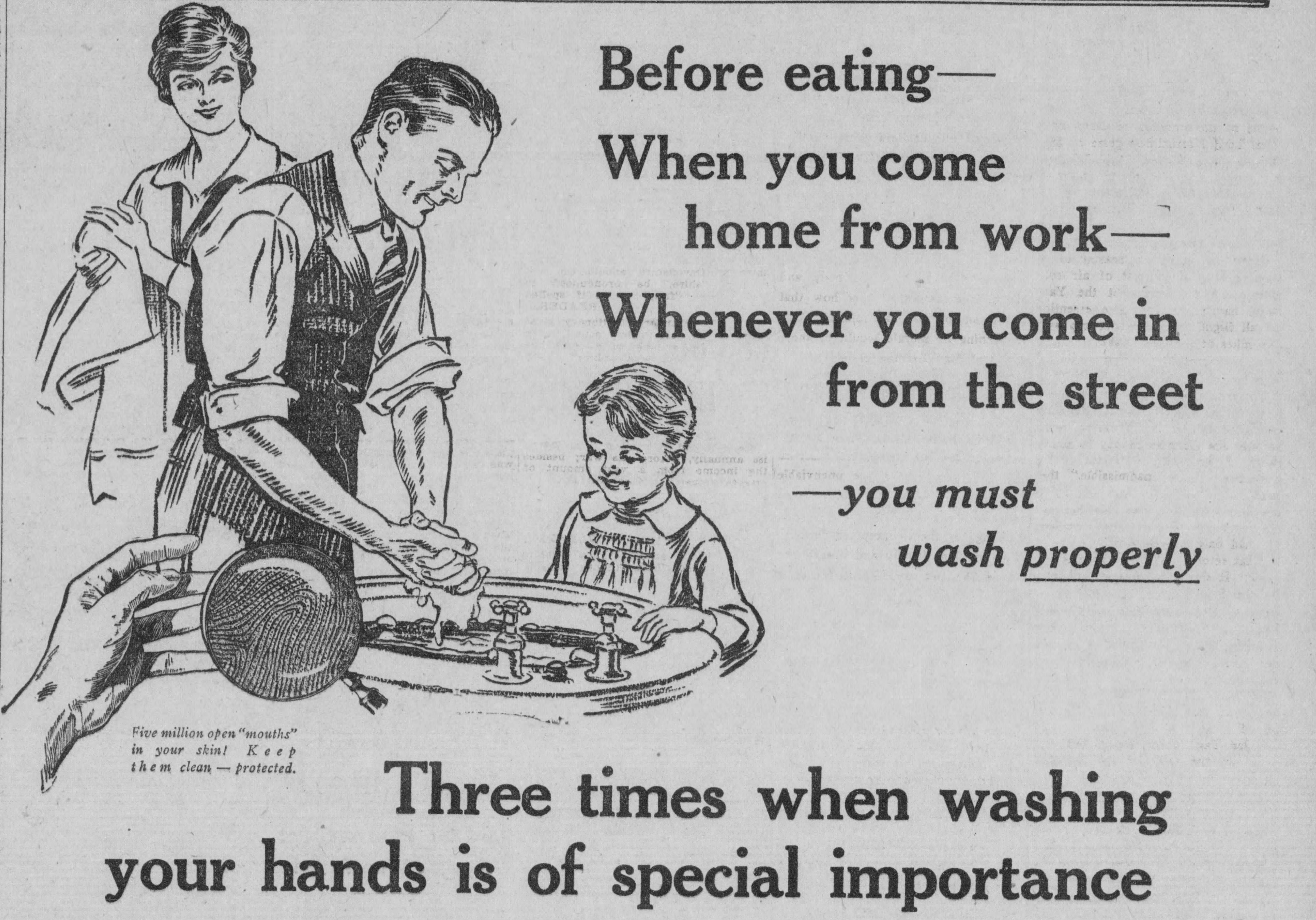
News clip provided by Dr. Bowles
Consider the guidance from “Coach Lewis,” who taught in a Philadelphia high school in 1918. He proudly proclaimed that every day he put students through what he called his “anti-flu exercises.” He believed the exercises worked because, “No one is sick on the football squad. The boys work too hard and take their physical exercise drills so they won’t be sick” (Philadelphia Inquirer, October 4, 1918, p. 12).
While we know today that exercise is not a vaccine for pandemics, it is as vital in 2020 as it was in 1918 for helping us cope with the physical and mental stress and uncertainty of an incurable virus.
And there is one other piece of advice from the past. In November 1918, a Nebraska reporter published an article entitled “Exercises Against Influenza.” The author focused on the importance of breathing for good health, and simply said, “breath is life.” The problem was that most people only used a small portion of their lungs to breathe. The author compared this shallow breathing to a “two-cylinder man when be might just as well be a six-cylinder man.” The author then proceeded to provide several deep breathing techniques to empower the body and calm the mind (Lincoln Journal Star, November 19, 1918, p. 11).
This focus on the breath and the breathing techniques should sound familiar to anyone who has taken a yoga class today. Jeanne Heiliman wrote an article for Yoga International called “Why Breath Matters,” and the similarities to the Nebraska article from 1918 are very evident. She also began by stating that most people do not breathe into the entire body or completely expand the lungs. She then went through the various breathing techniques (sama vritti, ujjayi, etc.), which the modern yogini guides her students through to revitalize and harmonize the breath, body, and mind.
Many lessons of the past resonate with our present moment. Perhaps the simplest is to breathe and do yoga.
I speak from experience, but not expertise. Though I am not a yoga teacher, I never skip my daily journey on my well-worn yoga mat. I practice a variety of types of yoga from the comfort of my home through online classes at AloMoves. Preferred styles include vinyasa with Ashley Galvin, barre with Adrienne Kimberley, and yin and restorative yoga with Meghan Currie. I breathe deeply and expand my lungs, and also sweat through some very demanding practices that might even please Coach Lewis.
While I know that yoga in no way makes me immune to the COVID-19 virus, consider how Dr. Aileen Fullchange answers the following question, “Why Do Yoga During a Pandemic?” She replied that yoga focuses on breath and bodily awareness. Most importantly, she said, “mindfulness is like a vaccine for contagious emotions.”
While this is a powerful thought, I would also like to suggest that there is another important reason for doing yoga during a pandemic. Yoga has the power to unite us in unique ways, even when we are socially distanced.
I teach a class at UAT called Contemporary Global Issues, and one of the most significant issues is the global water crisis. Consider these facts from the World Health Organization as of June 2019:
• Globally, at least 2 billion people use a drinking water source contaminated with feces.
• 785 million people lack even a basic drinking-water service, including 144 million people who are dependent on surface water.
• Contaminated water can transmit diseases such as diarrhea, cholera, dysentery, typhoid, and polio. Contaminated drinking water is estimated to cause 485,000 diarrhoeal deaths each year.

Scene from Africa
Global crises like this do not vanish in times of a pandemic. They often intensify. As you know, one main message to all of us in the United States today is to wash our hands to prevent the spread of the virus. Imagine if you were one of the 785 million people who did not even have water to drink. For them, hand washing is an unattainable luxury.
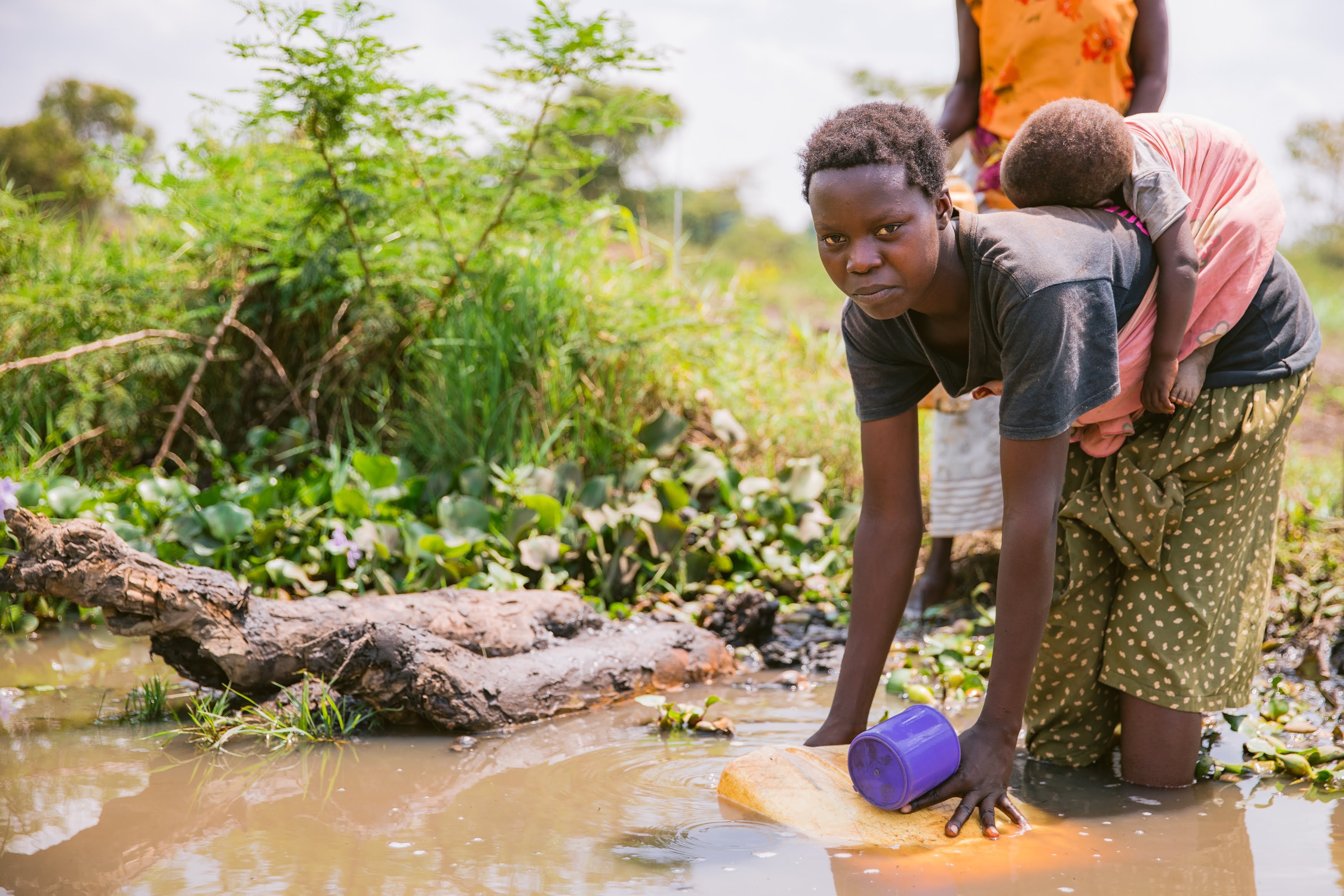
Scene from Africa
Here is where yoga comes in. It can not only help us individually weather the storms of a global virus, it can also motivate us to come together to raise money to combat global issues, like the water crisis.
How can we do this?
Indulge me in one final tangent.
In 2015 I co-authored a book with Katie Spotz entitled Just Keep Rowing. Our book described Katie’s world record 70-day solo row across the Atlantic Ocean (from Africa to South America). She attempted this not only to become the youngest person ever to row across an ocean but also to raise awareness and funding towards the global water crisis. Over the past decade, she has raised more than $400,000 for global water projects.
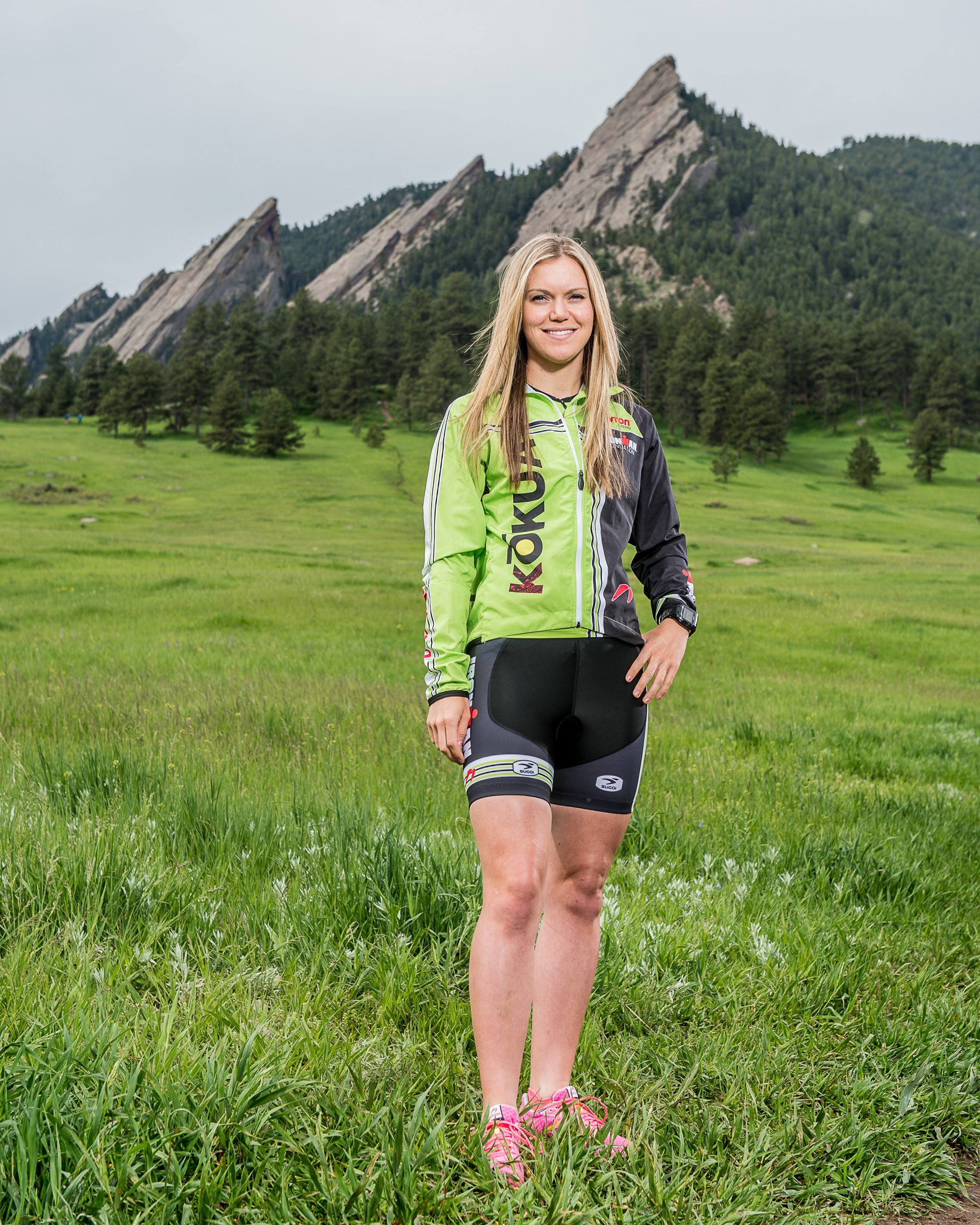
Athlete and author Kaie Spotz
She is now serving in the Coast Guard, stationed in Maine, and recently came up with a plan to hold an online charity yoga event, with 100 percent of the donations raised going towards a clean water project in Africa on behalf of Lifewater International.
I have been helping Katie organize the event called “Yoga for Water.” The motto is “Be a Hero. Stay Home. Do Yoga.” We will all be on our home mats while our technologically mediated yoga will unite us for fellowship, breath, and contributions to help those without the most basic need of clean drinking water and sanitation. It will take place on May 14th from 6 to 7:15PM EST (3:00PM MST), and yoga instructor Kat Cynewski will lead the class. The event is free, though donations are accepted. If you are interested, please join us on the mat by signing up here.
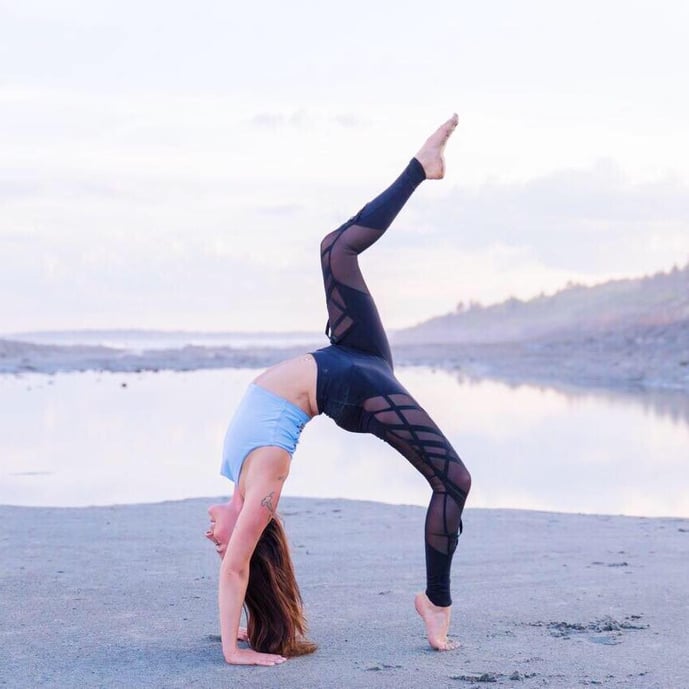
Yoga instructor Kat Cynewski
And so my final message from a humble yogi in a pandemic.
With yoga, we can find personal healing, overcome social distancing, and also confront global crises impacting our planet today, from pandemics to a lack of clean drinking water.
Do yoga.
Breathe.
Namaste.
Dr. Mark Bowles has taught at UAT since 2008. You can follow him on Instagram and Twitter @YogaHistorian, or contact him at YogaHistorian@gmail.com.
Read more about Lifewater at https://lifewater.org.




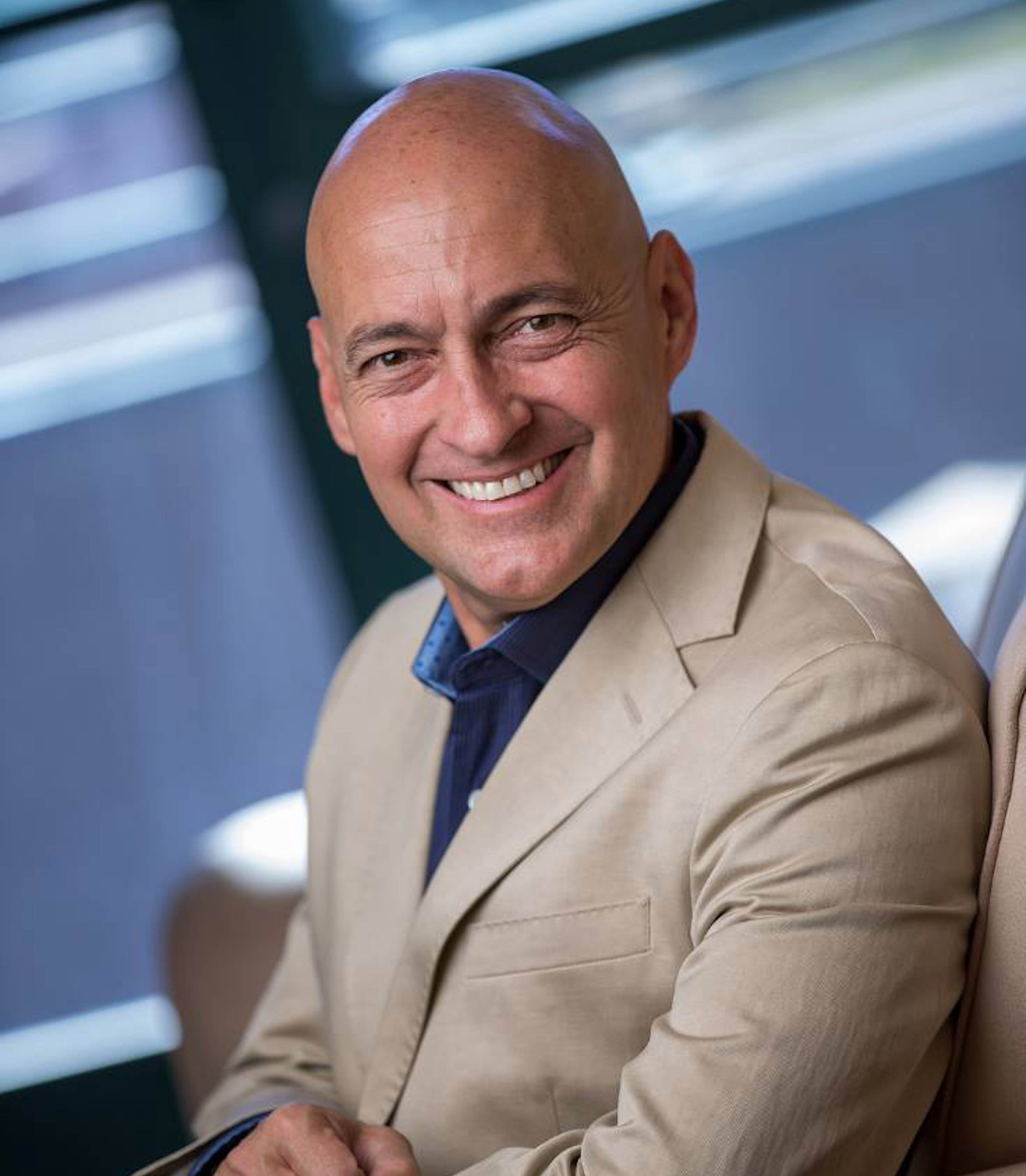
Comment